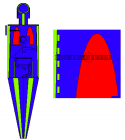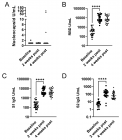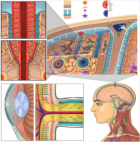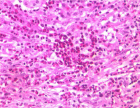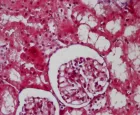Table of Contents
Effective COVID-19 prevention and control in areas of ultra-dense population: Lessons from Macau SAR
Published on: 3rd June, 2020
OCLC Number/Unique Identifier: 8628651927
In this paper we summarise, in chronological order, all COVID-19 preventive measures undertaken by the Macau Special Administrative Region (SAR) government during the first quarter of 2020. The information and narrative contained herein may be of useful to other parts of the world in COVID-19 control and prevention, especially cities with ultra-high population densities. The four main lessons from Macau SAR are: (1) Proactive leadership and early prevention. (2) Strict adherence to community endemic control. (3) Clear prioritising of public health. (4) Planed relief for financial hardships amidst the post-pandemic recession.
Levosimendan in sepsis
Published on: 29th May, 2020
OCLC Number/Unique Identifier: 8872659589
Levosimendan is a calcium sensitizer and its inotropic effect is mainly attributed to the troponin C of the myocardial fine filaments with calcium. Levosimendan also inhibits phosphodiesterase III. In contrast to inotropic effects, this does not increase calcium entry into the cell, which explains that levosimendan does not worsen myocardial diastolic dysfunction and may even improve diastolic function. Levosimendan does not increase the use of myocardial oxygen and increases coronary vasodilation and myocardial oxygen delivery. Levosimendan opens potassium channels and causes hyperpolarization in smooth muscle cell membrane, thus causing vasodilatation [1]. Levosimendan has also been reported to have antiinflammatory [2,3] and antiapoptotic effects [2].
Case reports of observed significant improvement in patients with ARDS due to COVID-19 and maximum ventilatory support after inhalation of sodium bicarbonate
Published on: 19th May, 2020
OCLC Number/Unique Identifier: 8599065026
The emergence of COVID-19 worldwide in an unprecedented pandemic. COVID-19 has a significant mortality, mostly from acute lung injury. We reviewed the available literature from China and Europe in regard to the behavior of SARS-Cov2 and ability to adhere to the cell wall [1,2]. The evidence based literature describes three component for the virus to grant entry to the target cells including Cathepsin B/L (the viral cap protein needed for initial connectivity to the cell wall), the angiotensin converting enzyme 2 and a low PH environment to allow the first connectivity of the virus to the cell wall [3]. The goal of our Case study was to prevent SARS- SARS-Cov2 from entering target cells by raising the airways PH using sodium bicarbonate inhalation. The sodium Bicarbonate inhalation (4.2% concentration) has been used safely in Cystic fibrosis (CF) patients with inspissated mucoid impaction [3,4] and in chloride inhalation toxicity by opposing the effect of the low PH induced by the insulting agent [4,5]. It has not been administered for COVID -19 patients particularly prior to this study.
Prevalence of premarital sexual practice and associated factors among Goba town high school students, South East-Ethiopia
Published on: 12th March, 2020
OCLC Number/Unique Identifier: 8553234584
Background: Premarital sexual practice significantly attributes for increase adolescent’s risk of unintended pregnancy, early marriage, abortion and STIs. In Ethiopia adolescents were intended to engage at early initiation to sexual intercourse without having proper protection has been one of the concerns. Study aimed to assess the prevalence of premarital sexual practice and associated factors among high school students.
Method: A facilities based study design was employed. Data were collected from 291 randomly selected Negade and Finca Bamo high school students using structured questionnaire from June 1-30, 2018. Bi-variate logistic regression used to identify variables that crudely associated and variables with p - value < = 0.05 fitted to multiple logistic regression. Odds ratio with 95% confidence interval was estimated using multivariable logistic regression to identify independent predictors of premarital sex.
Result: Among high school students, 31.2% reported had experienced premarital sexual practices. This shows that premarital sexual practices among high school adolescent’s students were high. Drinking alcohol [AOR = 4.06, 95%CI, (2.06 - 7.99)]. Watching pornographic video [AOR: 2.78, 95%CI, (1.45 - 5.3)] and educational status of mothers [AOR: 0.33; 95% CI (0.13, -0.84)] were significantly associated factors.
Conclusion: Drinking alcohol, watching pornography and mother education were predominantly significantly associated. Therefore, an integrated effort needs to be highlighted to deter the health behavioral problems of school adolescents at the early stages.

HSPI: We're glad you're here. Please click "create a new Query" if you are a new visitor to our website and need further information from us.
If you are already a member of our network and need to keep track of any developments regarding a question you have already submitted, click "take me to my Query."







